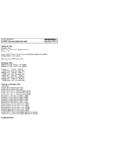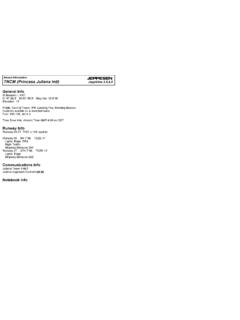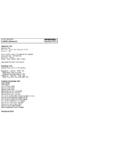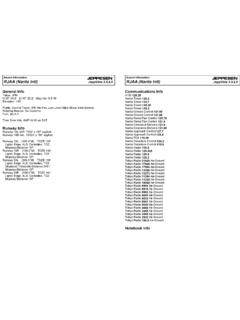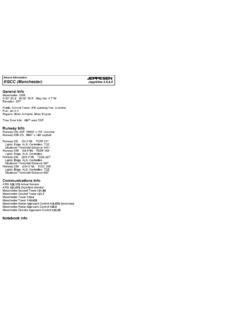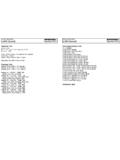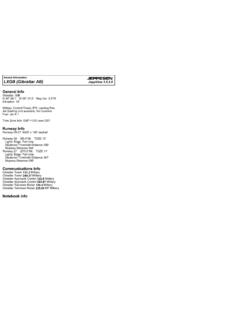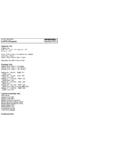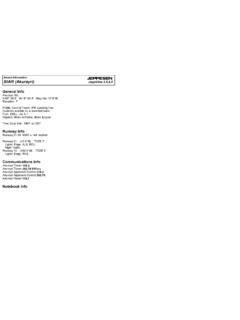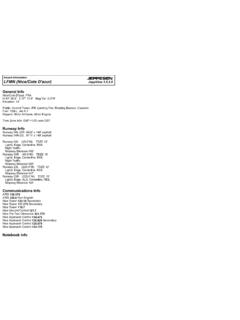Transcription of JEPPESEN LFMN (Nice/Cote D'azur)
1 JEPPESENJEPPESENJEPPESENJEPPESENJeppView ( nice / cote D'azur) Airport InformationGeneral InfoNice/ cote D'azur, FRAN 43 ' E 07 ' Mag Var: WElevation: 12'Public, Control Tower, IFR, Landing Fee, Rotating Beacon, CustomsFuel: 100LL, Jet A-1 Repairs: Minor Airframe, Minor EngineTime Zone Info: GMT+1:00 uses DSTR unway InfoRunway 04L-22R 8432' x 148' asphaltRunway 04R-22L 9711' x 148' asphaltRunway 04L ( M) TDZE 10' Lights: Edge, Centerline, REIL Right Traffic Stopway Distance 492'Runway 04R ( M) TDZE 10' Lights: Edge, Centerline, REIL Right Traffic Stopway Distance 525'Runway 22L ( M) TDZE 12' Lights: Edge, Centerline, REIL Stopway Distance 427'Runway 22R ( M) TDZE 10' Lights: Edge, ALS, Centerline, REIL Stopway Distance 164'Communications InfoATIS Non-EnglishNice Tower SecondaryNice Tower SecondaryNice Tower Ground Control Pre-Taxi Clearance Approach Control Approach Control SecondaryNice Approach Control Approach Control InfoLicensed to max.
2 Printed on 16 Feb : PRINTED FROM AN EXPIRED REVISION. Disc 01- 2008 JEPPESENJeppView | JEPPESEN SANDERSON, INC., 2007 . ALL RIGHTS D AZUR, FRANCELFMN/NCENICE/ cote D AZURJEPPESEN+ (French) NOISE ABATEMENT GENERALP ilots must comply with the noise abatement procedures provided to reduce noise nuisances as shown on shall observe the engine operation instructions included in the operating manuals to reduce noise nuisances of landing and take-off. These instructions shall comply with the ICAO PANS-OPS provisions, Volume overflying trafficIFR: Any detected deviations with overflying land may lead to a request for explanation from the crew and may result in filing of an infringement : Except for landing and take-off as also for ATC requirements (ATC unit clearances), use the highest possible flight NIGHTTIME RESTRICTIONSJet ACFT not licensed according to ICAO Annex 16, Volume I, Chapter 3 and 'the noisiest ACFT of chapter 3' (turbojet ACFT whose noise certification is according to ICAO Annex 16, Volume I, Part II, Chapter 3, which have a cumulated margin of certified noise levels with respect to permissible noise limits defined in this chapter, being less than 5 EPNdb) are not allowed to:- take-off between 2315-0600LT of departure from parking area.
3 - land between 2330-0615LT of arrival on parking restrictions do not apply to:- ACFT in emergency for flight safety reasons;- humanitarian or ambulance flights;- ACFT operating government missions;- ACFT mentioned in article L. 110-2 of Civil Aviation RUN-UP TESTSRun-up tests are not allowed between 2100-0600LT. This includes any operation carried out on a stationary ACFT with engines running for more than 5 minutes or with an engine power higher than those used for starting or taxiing may be granted between 2100-2300LT or 0500-0600LT for flight safety reasons by the Prefect of the Alpes-Maritimes on prior request from the person in charge of the flight (ACFT owner, technical or commercial operator).Exceptions:Run-up tests of piston engine ACFT within the limits of the checks required before take-off are allowed at any AUG 07 New GENERAL1. GENERAL1.
4 GENERAL1. GENERALL icensed to max. Printed on 16 Feb : PRINTED FROM AN EXPIRED REVISION. Disc 01- 2008 JEPPESENJeppView | JEPPESEN SANDERSON, INC., 2007 . ALL RIGHTS D AZUR, FRANCELFMN/NCENICE/ cote D AZURJEPPESEN+ AUXILIARY POWER UNITS (APUs)Use of a ground power unit (GPU) or an electrical converter is mandatory during , the use of an onboard APU is permitted except on parking kilo for a maximum of:- 30 minutes after arrival at stand,- 30 minutes before departure from stand, - for the total length of stopover, if less than 60 case use of parking kiloIn order to reduce the noise nuisances due to ACFT using the parking kilo, special operating instructions for this parking have been defined (see chart 10-9).ACFT being to stand on this parking shall comply with these operating restrictions. In particular:- on arrival: engine stopping upon entering the parking at the 'STOP ENGINE AND APU' line and towing to the ACFT stand;- on departure: towing to the refueling and starting area;- the APU can not be used on the apron; if needed, the ACFT must be towed to the starting area or a GPU must be RWY SEGREGATED RWY OPERATIONSIf not otherwise instructed by ATC, RWY operations are as follows: - RWY 04L/22R used for landing- RWY 04R/22L used for TAXI PROCEDURESCAUTION when cleared for RWY crossing.
5 Read back of all holding position instructions before RWY crossing R MAX wingspan 112 U between TWYs F and C MAX wingspan 171 PARKING INFORMATIONS tands 1B thru 1Q are available as push/pull 2A/B/C, 6A/B/C, 8A/B/C, 10A/B/C, 12A/B/C, 14A/B/C, 20, 22 thru 24C, 25A, 26R, 28, 31A, 33A, 35A, 37A, 39A, 40A/B/C, 42, 44, 46A/B/C, 48A/B/C, 50A/B/C, 52A/B/C and 54A/B/C are nose-in 3, 19A, 19C, 19D, 21A, 21C, 21D, 41A, 43A, 45A and 47A are nose-out OTHER GENERALRisk of confusion between RWY 04L/22R and TWY U (old RWY 05L/23R). 04L and 04R right-hand APT GENERALThis APT has topographic, environmental and climatological features that require specific procedures and operating methods. Crews should familiarise themselves with these before coming to nice . In addition to the official documentation, the internet site gives a resume of these specific AUG 07 New GENERAL1.
6 GENERAL1. GENERAL1. GENERALL icensed to max. Printed on 16 Feb : PRINTED FROM AN EXPIRED REVISION. Disc 01- 2008 JEPPESENJeppView | JEPPESEN SANDERSON, INC., 2007 . ALL RIGHTS D AZUR, FRANCELFMN/NCENICE/ cote D AZURJEPPESEN+ requirements for commercial operatorsCaptains must have followed a training program on current procedures and the basic characteristics of the APT are requested to classify the APT as Category B further to the criteria as defined by AMC/OPS relative to aerodrome requirements for general aviationIt is recommended that Captains follow a training program on current procedures and the basic characteristics of the APT TOPOGRAPHICAL AND METEOROLOGICAL FEATURESL ocationOn the coast and in close proximity to the built-up areas of nice to the West and North, the rest surrounded by sea, limiting the surface to the proximity of the sea and the river Var to the South there is the risk of bird hazard.
7 (DAY time bird control from SR to SS).Specialised parallel RWYsDue to the limited available space, the APT has dedicated close proximity parallel RWYs. South RWY for take-offs and north RWY for access to the take-off RWY, taxi routes cross the active landing RWY 04R departures access to the RWY is complex. If the crew request an arrival to RWY 04R, it is necessary that TWY W is free of all traffic and this may require a long ground850' and 2000' peaks at and 5 NM respectively, from RWY 22 up to 4200' 9 NM, NW and NE of the APT with peaks over 10,000' 29 NM on airspace and routesUseful volume for arrivals and departures mainly concentrated in a sector of about 130^ (QDR 090^ - QDR 220^).RWY direction (QFU) and windRWY direction was determined by local topography, not prevailing wind direction. Due to the complexity, capacity and the high minima of QFU 22, landings and take-offs on RWY 04 are accepted with up to a 6 KT tail-wind of wind shear on final 04/22 combined with a strong tail-windcomponent at medium altitude and cross wind on short final (confluent of gradient wind and sea breeze).
8 Serious risk of cross or full crosswind component due to the sea and river valley proximity and in particular RWY 04 THR (close to the Var estuary). ARRIVALS04 arrivalsLandings are preferred due to the meteorology, minima and are used about 90% of the time. RWY 04L is dedicated to 04L landing RWY can be confused with TWY U. Under favourable meteorological conditions (10km/3000') the "RIVIERA RWY 04" is used, avoiding overflying Cannes East, Vallauris and Antibes. About 2/3 of 04 arrivals use the RIVIERA approach. During less favourable conditions ILS RWY 04L is available. The 3^ slope allows for low noise descents over 3^ RWY 04L PAPI is situated to the RIGHT of RWY 04L theshold. Threshold height has been calibrated for CAT D AUG 07 New GENERAL1. GENERAL1. GENERAL1. GENERALL icensed to max. Printed on 16 Feb : PRINTED FROM AN EXPIRED REVISION.
9 Disc 01- 2008 JEPPESENJeppView | JEPPESEN SANDERSON, INC., 2007 . ALL RIGHTS D AZUR, FRANCELFMN/NCENICE/ cote D AZURJEPPESEN+ arrivalsArrivals occur about 10% of the time, about 120 days per year for periods of several hours at most (sea breezes) and occasionally all day with strong W/SW winds. Ceiling and visibility are usually good except for a few days a year and then only for a few hours at most. 22R is dedicated to landings. The 22R landing RWY can be confused with TWY U. Due to high ground the final approach is on a fixed track. Procedure is called "SALEYA RWY 22". Due to obstacle clearance the minima are high (8km/1500'). Under certain adverse weather conditions there is a risk of holding or diversion. To carry out this procedure aircrews should:- check speed and ACFT set-up BEFORE the visual phase of the approach- strictly maintain published altitudes because of VFR helicopter flying at MAX 500 without transponder under the procedure- be aware of marked high obstacles on the RIGHT of base leg- note the very short final descent at ^ At NIGHT, if these marked obstacles are not visible, the procedure is not authorized.
10 During strong westerly winds there may be high turbulence on short final that could result in missed approaches. In this case the traffic may be carried exceptionally on RWY circle-to-land will not normally be designated by nice ATC to be used for landing on RWY 22L or 22R. Notably, the more absence of operating conditions for SALEYA procedures has not to be considered like an exceptional situation and does not constitute a reason for using a circle-to-land RWY 22 procedure except on limited DEPARTURESS outh RWY (04R/22L) dedicated to landing RWY must be crossed before reaching take-off THR 04R or taxiing distances from certain stands to RWY 04L/22R holding points can generate RWY incursion risk despite reinforced phraseology and DAY/NIGHT illuminated markings. Due to the seperation of the two RWYs they are not independent and require complex taxi routes for access to RWY 04R/22L and in particular for access to RWY 04R when TWY W, marked in green, is dedicated to 04R departures to allow for landing on RWY presence of high ground on the extended centerline of RWY 04L/R imposes a 095^ RIGHT turn at 400' 22: Pilots attention is drawn to the possibility of simultaneous movement of helicopters using the helipad.
